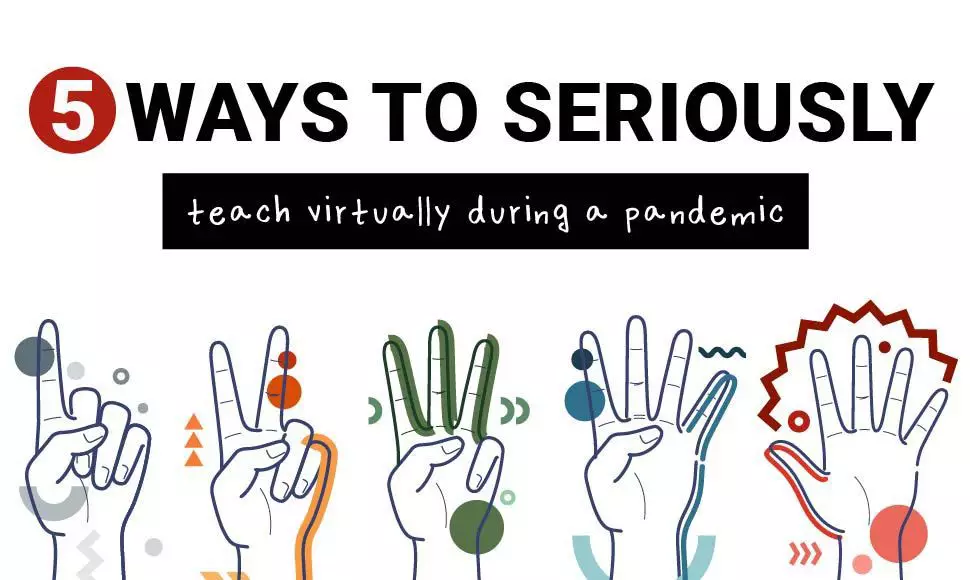5 ways to seriously teach virtually during COVID
By Lilia Ortiz
Like many things, education changed drastically at the start of the pandemic. Teaching went from in-person to virtual almost overnight. Suddenly teachers had to learn how to teach virtually and students had to adapt to an entirely new learning environment.
Nora Stanley was in the midst of it all. Stanley, a University of Phoenix student, is a student teacher for kindergartners in Kayenta, which is part of the Navajo Nation in Navajo County, Arizona. She's experienced firsthand the challenges of virtual teaching during the pandemic.
University of Phoenix student Nora Stanley.
She shares, “On the Navajo reservation, we're limited. We're limited with the internet. Some families didn't have the [signal] towers to reach them. So they had to be set up to make sure students were able to log on and attend classes.”
The following are her top five tips to teach virtually. Anyone can implement these tips, including a parent of a remote student or a teacher in the virtual classroom.
1. Communicate with stakeholders
Communication is the foundation of any healthy relationship, and the student-teacher-parent one is no exception. When it comes to setting her students up for success, Stanley says, “When you connect with the children and the parents, working with them and building that rapport, it makes a big difference.”
Involving parents in the learning process can be as simple as making introductions at the beginning of the year and explaining to parents how they can best support their child's progress, according to Teach.com. The main thing is to establish early communication and continue it throughout the year.
On the flip side, parents who find themselves overseeing virtual instruction — or who want to stay involved with their kids’ education after they return to in-person school — need to make regular and healthy communication a priority. If you disagree with something happening in the classroom, approach it from a constructive, how-can-we-fix-this-together approach.
Staying looped in on what your child is studying (and when that school project is due) is critical for their success.
2. Provide engaging content
When asked how to keep young students engaged through a computer screen, Stanley acknowledges, “As a kindergarten teacher, you have to have talent. You have to make everything fun and engaging.” She starts the school day with a motivational video based on the lesson.
Aside from having an inherent ability to keep children entertained, music and activity are also essential to creating engaging content. Stanley cites Jack Hartmann's YouTube videos as her source for fun videos that get her students up and moving.
The trick is not to view virtual teaching as a limiting factor. Instead, it's best to view virtual teaching as full of new possibilities not offered by a traditional classroom. For example, teachers like Jonte Lee have transformed their homes into inspiring learning environments to teach virtually. Lee is a University of Phoenix faculty member who also teaches chemistry to high school students by conducting science experiments in his kitchen.
By using technology and a little imagination, any lesson can go from boring to brilliant!
3. Know your material
Stanley has a firm belief: “Any child is capable no matter what.”
According to her, it’s important to know your material and present it in a way that facilitates learning. Creating connections between a new concept and something familiar is a great way to build a student’s knowledge.
In fact, Judy Willis, a neurologist and former classroom teacher, says in an Edutopia.org article that it’s necessary for learning to connect new information to old information, “or it just won’t stick.” Willis emphasizes that effective teaching is about helping students recognize patterns and placing new information in context with what they already know.
Stanley adds online teaching resources are also crucial when introducing new material as they target a range of learning styles.
4. Create a daily structure
Children thrive with a consistent daily schedule, a fact that became even more important during the pandemic when “uncertainty” was the word of the day (year!). By adding familiarity to the school day, children can feel more confident and secure.
Stanley explains that as a student teacher she led a one-hour reading block that included 15 minutes of co-teaching with the lead teacher. This structure helped reinforce a lesson and allowed students to know what to expect. It also created a positive and engaging learning environment.
5. Have fun
During such troubling times, it's easy to forget that learning should be fun
According to Willis, in an article she wrote for the Association for Supervision and Curriculum Development’s Educational Leadership magazine titled "The Neuroscience of Joyful Education," having fun is especially important among younger students, who learn best when their minds are motivated and stress-free.
She adds, “When we scrub joy and comfort from the classroom, we distance our students from effective information processing and long-term memory storage.”
So how can a teacher make the classroom fun and teach virtually without losing sight of learning objectives? The trick is to align games and activities in the classroom with a specific goal. For example, playing Pictionary can help students practice their vocabulary, and Go Fish can improve number recognition.
In the end, Stanley stresses, “All you need is to make things fun and engaging.”
Are you interested in pursuing a career in education? Learn more about University of Phoenix's online education degrees here.
Read how College of Education instructor Donna Lange stays virtually connected to her students to help them succeed.
Disclaimer: Jack Hartmann and his videos are not affiliated with University of Phoenix.
read similar articles




